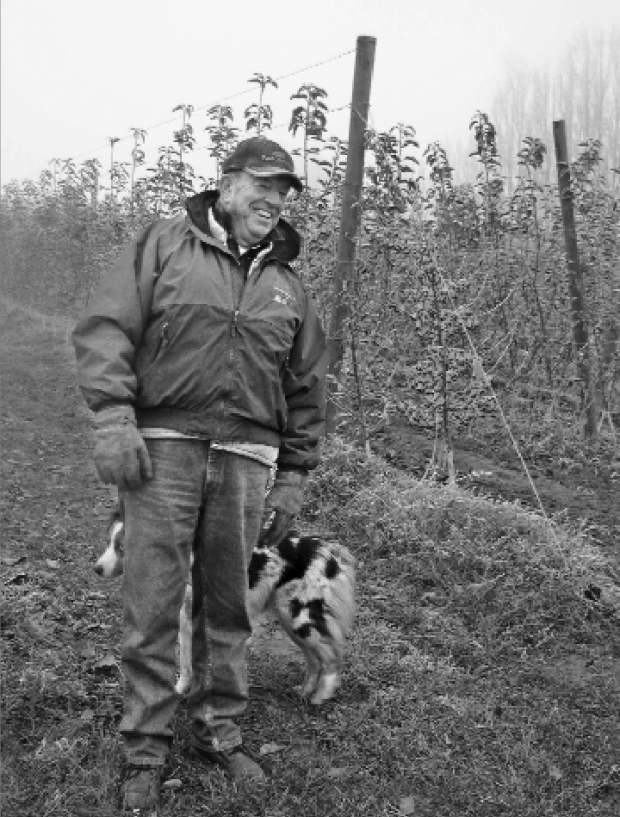
Jack Pheasant hoped to emulate the British Columbia approach to growing Ambrosia.
(Geraldine Warner/Good Fruit Grower)
Jack Pheasant did all he could to get his Ambrosia planting on the Royal Slope off to a good start, but soon found the trees growing too well. He fumigated the ground with a mixture of methyl bromide and Telone (chloropicrin), and incorporated 40 tons of dairy manure into the soil in the 1.25-acre block before planting the trees. The Washington Tree Fruit Research Commission is conducting a systems trial in the block, and so some rows are on a V-trellis system with about 15 inches between trees, while some are upright spindle trees planted 36 inches apart, and others are high-density spindles 18 inches apart.
Most of the trees are on Malling 9 rootstocks. One row is on Budagovsky 9. Distance between the rows is 9 feet for the upright trees, 12 feet for the V-trellis, and 11 feet where the V and the upright systems are next to each other. Pheasant harvested 5.5 bins of fruit from the planting in the second leaf—less than he had hoped for. Pheasant said he suffered an injury shortly after planting the trees and didn’t apply a mildew control as soon as he would have otherwise. “Those trees suffered the first half of the year for lack of a mildew spray,” he said. He later applied Rally (myclobutanil) and urea, and the trees quickly responded, he added. “But it hurt us on fruit bud development.”
Strong growth
Another reason for a lack of fruit buds was the stronger than expected growth of the trees, particularly in rows with the wider tree spacing. After a modest start, the trees started growing strongly during the first summer and soon reached the top of the trellis. Pheasant said in hindsight, he thinks he should have applied the growth regulator Ethrel (ethephon) to slow down growth. He generally applies Ethrel to Fuji at 50 and 60 days after bloom, and has had consistent cropping of 50 bins per acre.
Ambrosia has a tendency to spur. Its growth habit is similar to spur Red Delicious. He was hoping to emulate the British Columbia, Canada, growing system in his high-density spindles and grow the trees slowly, but the tree growth is already too strong. His orchard was hit by hail this year, and he said he might not have paid enough attention to tipping and cutting back the trees during the summer. He’s planning to remove strong growth and devigorize the trees by pruning two weeks after bloom. He’ll leave the tops unheaded and retain what crop he can. Pheasant said postbloom pruning is a new approach for him. He’s always pruned during the dormant season before.
He’s usually started with Braeburn, moving to Gala and Granny Smith, and Cameo, and has always pruned his Fujis just before bloom. “Part of it is you have enough bud swell, it’s easy to see your fruit buds, and we prune accordingly,” he explained during a winter tour to his orchard organized by Washington State University Cooperative Extension. Jim Fleming of Quincy, Washington, said he plans to prune his Fuji trees after bloom this year so he can see how many blooms he has first.
Light
Tom Auvil, research horticulturist with the Research Commission, said the commission will compare fruit quality and coloring on the three systems, and Dr. Clark Seavert, agricultural economist with Oregon State University, will analyze the economic impact of various production practices. Ambrosia needs plenty of light to color well, and so it’s important to keep strong wood out of the tree, Pheasant said. “It’s an apple that you might say has a little bit of Pink Lady characteristic in that it stays green right to the end.” The variety is not susceptible to sunburn during the growing season, but as the sugar levels rise towards harvest it can sunburn, he said.
He’s installed overhead cooling with the idea of cooling the trees just before harvest. The variety matures the same time as Red Delicious, which at Pheasant’s site on the south slope of the Frenchman Hills, is about the third week in September. The fruit generally peaks in the 80 to 72 size range. Pheasant said Ambrosia from British Columbia has had good market acceptance. However, there’s little experience with long-term storage of the variety.
He said he planted the variety partly to extend his harvest and partly because he thinks it has a good future. Pheasant is having the fruit packed and sold by McDougall & Son in Wenatchee, Washington, which has the U.S. license for the variety.

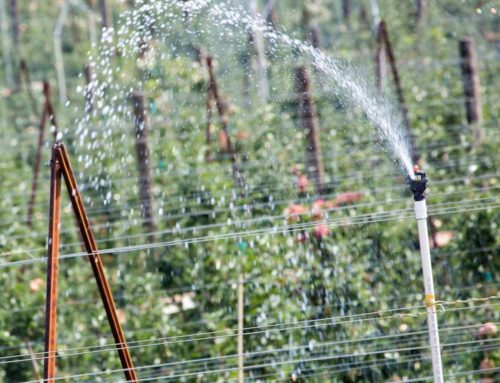
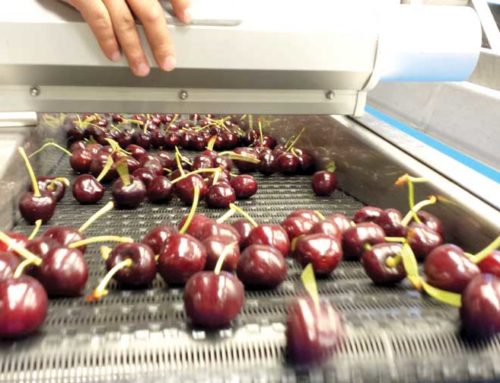
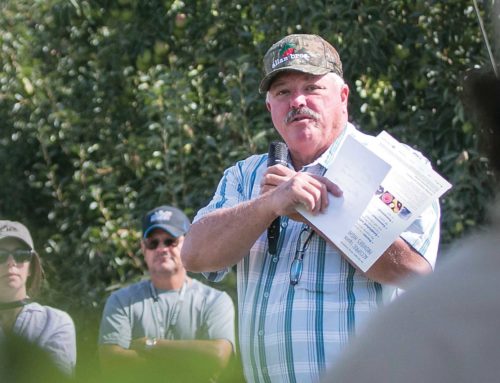
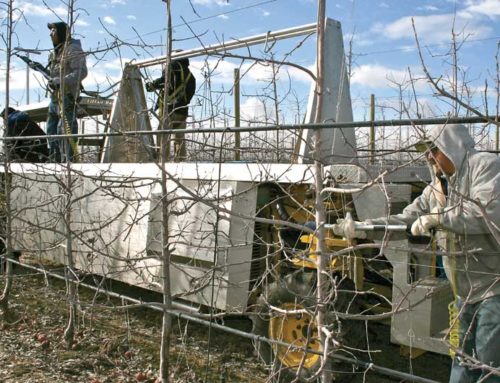
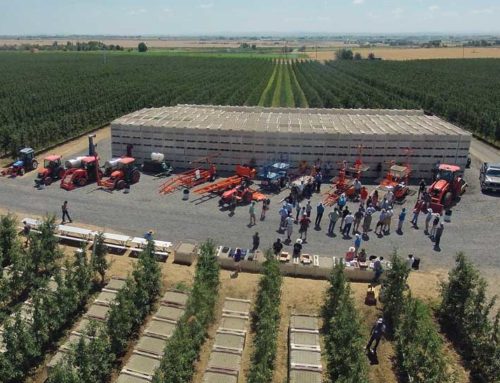
Leave A Comment